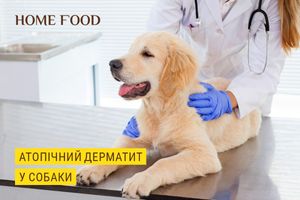Pregnancy in dogs — this is an important and responsible period that requires increased attention from the owner. To ensure the maximum comfort and health of the pet at this time, you need to understand the signs and stages of this condition. In this article, we will consider the key signs of pregnancy, diagnostic methods, as well as the rules for caring for and feeding pregnant dogs.
Signs of pregnancy, estrus and cycle
In most dogs, heat occurs twice a year and lasts about 3 weeks. The sexual cycle consists of several phases: proestrus, estrus, metestrus and anestrus. Fertilization is possible only during estrus. It is difficult to determine the exact moment of ovulation, so the connection is carried out several times during this period to increase the chances of successful conception.
Signs of pregnancy may appear 2-3 weeks after mating. Among the main symptoms, the following can be distinguished:
- change in appetite: at first, interest in food sometimes decreases, and after a while, on the contrary, it increases;
- change in behavior: pregnant bitches often become calmer, become attached to the owner or seek solitude;
- physiological changes: by the fourth week, you can notice an increase in the volume of the abdomen and swelling of the nipples;
- coat condition: it may become smoother and shinier due to hormonal changes in the body.
These signs will help owners in the early stages to recognize a possible pregnancy and start preparing for the next stages.
How long does pregnancy last
The average duration is 58-65 days, and sometimes puppies can be born on the 72nd. This period varies, because usually two planned matings are carried out with an interval of 24-48 hours, and fertilization can occur during the second.
For convenience, puppyhood is divided into three trimesters: the first (1-23 days), the second (24-43), the third (44-until the moment the babies are born).
In order to properly prepare for childbirth, owners need to keep track of due dates and carefully monitor the pet's condition throughout the entire period of pregnancy. Regular examinations by a veterinarian will help monitor the development of the fetus and respond to any changes in a timely manner.
Stages of pregnancy
Fertilization can occur from different males, and this is possible already during the first estrus. Therefore, owners who are interested in whether pregnancy is possible after the first mating should consider this possibility.
Second week
Embryos move to the horns of the uterus and attach to its mucous membrane. After that, they begin to actively grow and develop.
The third week
Embryos continue their development, and already at this stage you can notice the first signs of pregnancy: a change in appetite and activity level.
Fourth week
At this stage, the vet can detect the growing embryos by careful palpation or by ultrasound, which also allows you to hear the heartbeat. The dog's appetite gradually increases, and the weight begins to increase actively.
Fifth week
Embryos turn into full-fledged fruits, which quickly increase in size. Organs are actively developing. The pet's stomach is already starting to grow.
Sixth week
The fruits form a skeleton and begin to grow fur. The dog's belly noticeably increases and becomes harder. The animal may begin to feel discomfort when choosing a comfortable position for rest.
Seventh week
The mammary glands begin to swell, and the nipples become more convex and darken. You can also notice hair loss on the stomach. Puppies become more active and move in the womb.
Eighth week
The development of puppies at this stage is almost complete. They take positions in the birth canal, preparing for birth. The female begins to look for a place to give birth, showing the nesting instinct.
Ninth week
The time of childbirth is approaching. Puppies are fully formed and ready to be born.
Behavioral changes in a pregnant dog
The behavior of the expectant mother can change significantly. Many women become calmer, less active and prefer to spend more time alone. Some start looking for cozy places in the house to create a "nest" where they plan to give birth.
The dog also often shows anxiety or worry, especially in the later stages of pregnancy. This is due to the body's preparation for childbirth and natural changes in the hormonal background. It is important to provide the pet with comfort and to give him the opportunity to rest in silence to avoid stress.
In addition, owners should carefully monitor the dog's health, providing it with adequate nutrition and necessary vitamins. Constant walks in the fresh air will help maintain physical activity, which will also have a positive effect on general well-being.
Pregnancy diagnosis methods
There are several diagnostic methods that can be used to orist on different terms:
- Ultrasound. The most accurate and most common method of diagnosis, which allows you to confirm the presence of fruits and assess their condition. It can be carried out between the 25th and 35th day of pregnancy.
- Palpation. An experienced veterinarian can feel the fruits after 28-30 days. However, this method requires care so as not to harm the puppies, and is not always possible with large breeds or overweight dogs.
- Analysis of the relaxin hormone. It is produced only during puppyhood. The analysis can be carried out from the 25th day after mating.
- X-ray. This method is used late (after 45 days) when the puppies' skeletons are calcified enough to be seen on X-rays. An X-ray helps to accurately determine the number of puppies.
Although professional diagnostic methods are the most accurate, owners can also observe external and behavioral changes in their pet.
Home methods of determining pregnancy
In the early stages, the following changes can be noticed at home:
- increase in the volume of the abdomen;
- swelling of nipples;
- change in appetite and behavior.
However, all these signs are not reliable and may appear for other reasons. Therefore, it is better to supplement home methods with a consultation with a veterinarian.
Caring for a pregnant dog
You have determined that your pet is pregnant. What's next? Make sure she gets good care that meets her physical and emotional needs. This is what is important to pay attention to.
- Physical activity. The male needs to remain active, but without heavy loads. She should not run or jump intensively, but moderate walks will be useful for maintaining muscle tone and health.
- A place to relax. Provide the animal with a calm and cozy place where it can rest. Avoid stress, noisy companies and frequent guests.
- Hygiene. Take care of the cleanliness of the resting place and the hygiene of the dog, especially if it has long hair. In the last stages of pregnancy, the belly may increase, and then the animal will not be able to take care of itself.
Thanks to these recommendations, as well as examinations by a veterinarian, your pet will be able to stay healthy and carry out the pregnancy as comfortably as possible.
Rules for feeding a dog during pregnancy
During this period, a more balanced diet is required. It is important to increase the ration as the fruits grow, but not to overfeed. From 1 to 5 weeks, the expectant mother can eat the same as an ordinary adult healthy dog. And from week 6-7, the body requires more energy, needs protein, phosphorus and calcium.
It is recommended to use food for pregnant dogs, which contain the necessary amount of proteins, fats , vitamins and minerals. Portions should be small to avoid overloading the stomach, but meals should be frequent - 3-4 times a day.
During the last stages of pregnancy, dogs may lose their appetite, which is due to the increase of the fetus, which puts pressure on the digestive organs. In such cases, it is worth offering more nutritious feed in smaller amounts.
Drugs and vaccinations
During pregnancy, the decision to prescribe any medications is made only by a veterinarian and individually. Many drugs can be dangerous both for the bitch and for the development of the fetus, so their use is strictly limited.
If there is a high risk of infection with helminths, deworming is allowed only under the supervision of a veterinarian using safe drugs selected individually. Intestinal parasites can be transmitted to puppies both in utero and during feeding.
It is best if the dog receives all the necessary vaccinations and is treated for parasites even before pregnancy. However, if this has not been done, in some cases the veterinarian may recommend vaccination during pregnancy. Since puppies are born without their own immunity, they receive antibodies along with their mother's first milk. For reliable protection of the offspring, the mother must have a sufficient level of antibodies. If one of the main vaccinations was not given before pregnancy, the veterinarian may insist on vaccination because the benefits of immunization outweigh the possible risks.
How to determine the due date
To determine the approximate date of birth, you need to count 62 days from the moment of initial mating. But this date is conditional. After all, in small breeds, pregnancy can last 55-62 days, and in large breeds - 66-72. For a more accurate forecast, you can consult a veterinarian, who will evaluate the development of the fetuses and the approximate date of their birth using ultrasound or X-ray.
Signs of approaching childbirth in dogs
Before giving birth, the dog shows characteristic signs:
- decrease in body temperature: 18-24 hours before pologs, the temperature usually drops by 1-1.5 degrees;
- restless behavior, the female begins to look for a separate place for childbirth, dig the bed and often change positions;
- swelling of the mammary glands and in some cases secretion of colostrum.
These signs help the owner to prepare for childbirth and provide the pet with comfortable conditions.
After the contractions, the dog's water breaks, and after about 30 minutes, the first puppy is born. After the birth of the first cub, the following ones may appear with an interval of several minutes to two hours. This is completely normal, even if the puppies are born with their paws forward. The final stage of childbirth is the birth of the litter, which is also called the placenta.
The owner should carefully monitor the condition of the female and consult a veterinarian in case of prolonged seizures or other complications.
When to consult a veterinarian
Sometimes childbirth can be complicated, and in such cases you should immediately consult a veterinarian:
- if the dog is longing for 15 minutes or more, but the puppy is not born;
- the interval between the birth of puppies is more than two hours;
- severe pains or unusual secretions are observed;
- not all puppies were born during the day.
The veterinarian will provide the necessary assistance to prevent complications and ensure a successful birth.
Puppies are born in a protective amniotic membrane, which the mother usually tears soon after giving birth. If she does not do this, the owner must intervene, following certain stages:
- rupt the fruiting sac;
- gently wipe the liquid from the puppy's nostrils;
- open his mouth, keeping his head down, and wipe away the remaining liquid;
- stimulate breathing by gently but intensively stroking it with a towel.
If the dog does not gnaw the umbilical cord, the owner must also do so. It is important not to pull on it, so as not to damage the internal organs of the puppy. The umbilical cord must be either torn off or cut at a distance of 2-5 centimeters from the body. To facilitate the process, it is useful to have medical tools at hand: clamp and scissors.
A dog's pregnancy is a special period that requires careful care and observation. Knowing the main signs, correct diagnosis and care will help ensure comfort during this condition and a successful delivery. Timely visits to the veterinarian and compliance with recommendations for feeding and care will preserve the health of both the mother-to-be and her puppies.






















































